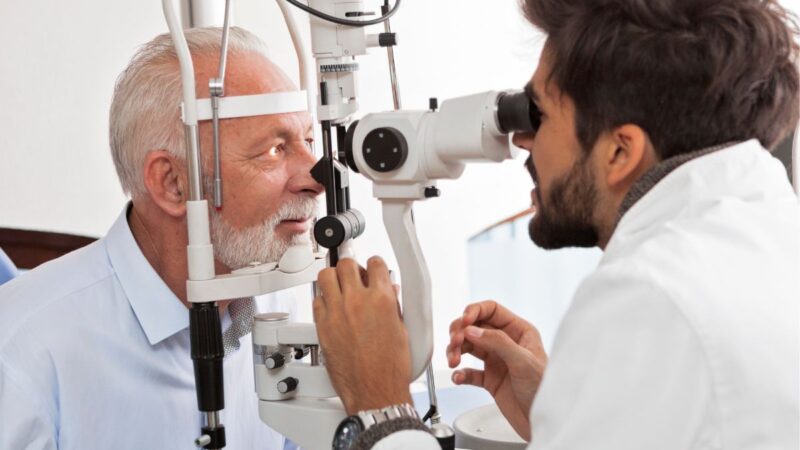The Benefits And Drawbacks of Various Refractive Surgical Procedures for Enhanced Eyecare

LASIK Surgical Procedure
LASIK surgical treatment is a commonly carried out refractive procedure that aims to fix vision problems such as astigmatism, nearsightedness, and farsightedness. Throughout the treatment, a thin flap is created on the cornea, and a laser is used to reshape the underlying tissue, correcting the refractive error.
Among the main benefits of LASIK surgery is the quick renovation in vision experienced by lots of clients. The majority of individuals observe a substantial enhancement in their vision quickly after the treatment, with marginal downtime needed for healing. Additionally, LASIK is recognized for its high success rate and reduced occurrence of problems when performed by knowledgeable doctors. Like any medical procedure, LASIK additionally brings some threats, including completely dry eyes, glare, halos, and under or overcorrection of vision. It is important for people considering LASIK surgery to undertake a complete assessment by an eye treatment professional to establish if they appropriate prospects for the procedure.
PRK Procedure
The PRK treatment, likewise referred to as Photorefractive Keratectomy, is a kind of refractive surgical treatment that aims to remedy vision concerns similar to LASIK surgical procedure. Unlike LASIK, which includes creating a flap in the cornea, PRK works with the surface area layer of the cornea. During the PRK treatment, the outer layer of the cornea, called the epithelium, is gotten rid of to permit improving of the underlying corneal tissue with an excimer laser. This reshaping helps to fix refractive errors such as nearsightedness, astigmatism, and farsightedness.
Among the benefits of PRK over LASIK is that it removes the threat of flap-related problems considering that no flap is developed throughout the surgery. This can be useful for individuals with slim corneas or those entailed in contact sports where eye trauma is a possibility. Nevertheless, the healing time for PRK is commonly much longer contrasted to LASIK, as the outer layer of the cornea needs time to restore after the treatment. Despite the longer recuperation duration, PRK can be an ideal choice for individuals looking for vision correction surgical procedure.
SMILE Surgical Procedure
A sophisticated refractive surgical treatment technique acquiring appeal in the area of ophthalmology is SMILE Surgical treatment. Small Laceration Lenticule Extraction (SMILE) is a minimally intrusive procedure that remedies vision by improving the cornea utilizing a femtosecond laser. Unlike traditional LASIK surgical procedure, SMILE Surgery entails creating a little incision in the cornea to draw out a lenticule, which causes less interruption to the corneal framework and potentially quicker recuperation times.
One of the main benefits of SMILE Surgical treatment is its ability to deal with myopia (nearsightedness) and astigmatism with high precision, bring about outstanding aesthetic end results for clients. The minimally intrusive nature of the treatment likewise lowers the risk of complications such as completely dry eye disorder, making it a positive alternative for individuals looking for refractive special info surgery.

LASEK Method
Having actually discovered the advantages and factors to consider of SMILE Surgery, another noteworthy refractive surgical treatment strategy worth examining is the LASEK Technique. LASEK, which stands for Laser-Assisted Subepithelial Keratectomy, is a type of laser eye surgical treatment that aims to remedy refractive mistakes such as nearsightedness (nearsightedness), hyperopia (farsightedness), and astigmatism.
Unlike LASIK, LASEK does not involve creating a corneal flap. Rather, during a LASEK procedure, the cosmetic surgeon uses a diluted alcohol remedy to loosen up the thin outer layer of the cornea, recognized as the epithelium.
Among the main benefits of LASEK is that it can be appropriate for individuals with slim corneas who might not be good prospects for LASIK. Additionally, LASEK typically causes marginal post-operative discomfort and a quicker healing time contrasted to PRK. Nonetheless, the aesthetic recuperation procedure with LASEK might be slightly longer than with LASIK.
Implantable Contact Lenses
Implantable Call Lenses provide a lasting vision modification solution for people looking for an option to traditional call lenses or glasses. These lenses, also called phakic intraocular lenses, are operatively inserted right into the eye to deal with refractive errors such as nearsightedness (nearsightedness), hyperopia (farsightedness), and astigmatism. eye doctors in andalusia. Unlike typical contact lenses that remain on the surface area of the eye, implantable contact lenses work within the eye itself, supplying clear vision without the demand for everyday upkeep or removal
Among the key advantages of implantable call lenses is their permanence. When inserted, they can remain in the eye forever, offering steady and constant vision correction. In addition, these lenses can be a superb alternative for individuals that are not excellent candidates for laser eye surgical procedure or that prefer a relatively easy to fix vision improvement treatment.
Nevertheless, implantable call lenses do carry some risks, including the possibility for cataracts or increased eye pressure. It is essential for individuals considering this choice to speak with an eye care expert to establish if implantable call lenses are the appropriate selection for their details demands and eye wellness.
Verdict
To conclude, each kind of refractive surgical procedure has its own advantages and disadvantages. LASIK surgery is preferred for its fast healing time, while PRK treatment may be appropriate for people with slim corneas. SMILE surgical procedure supplies marginal pain during the procedure, but LASEK technique may have a longer healing process. Implantable contact lenses provide an option for those that are not appropriate candidates for typical surgical procedures. People must seek advice from their eye care service provider to figure out the most effective option for their individual needs.

Generally, SMILE Surgery provides an encouraging option for people looking to improve their vision resource through refractive surgical treatment.